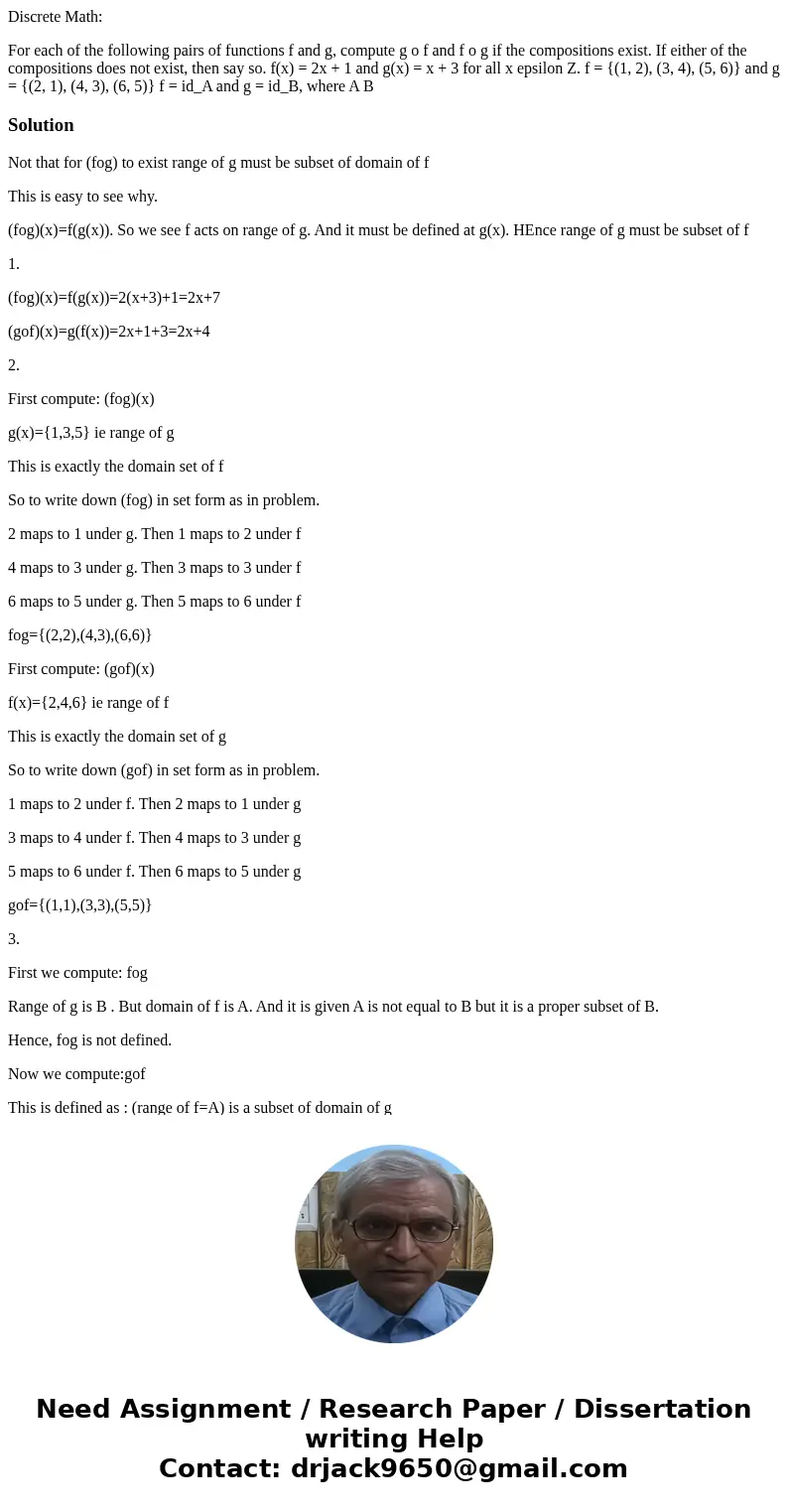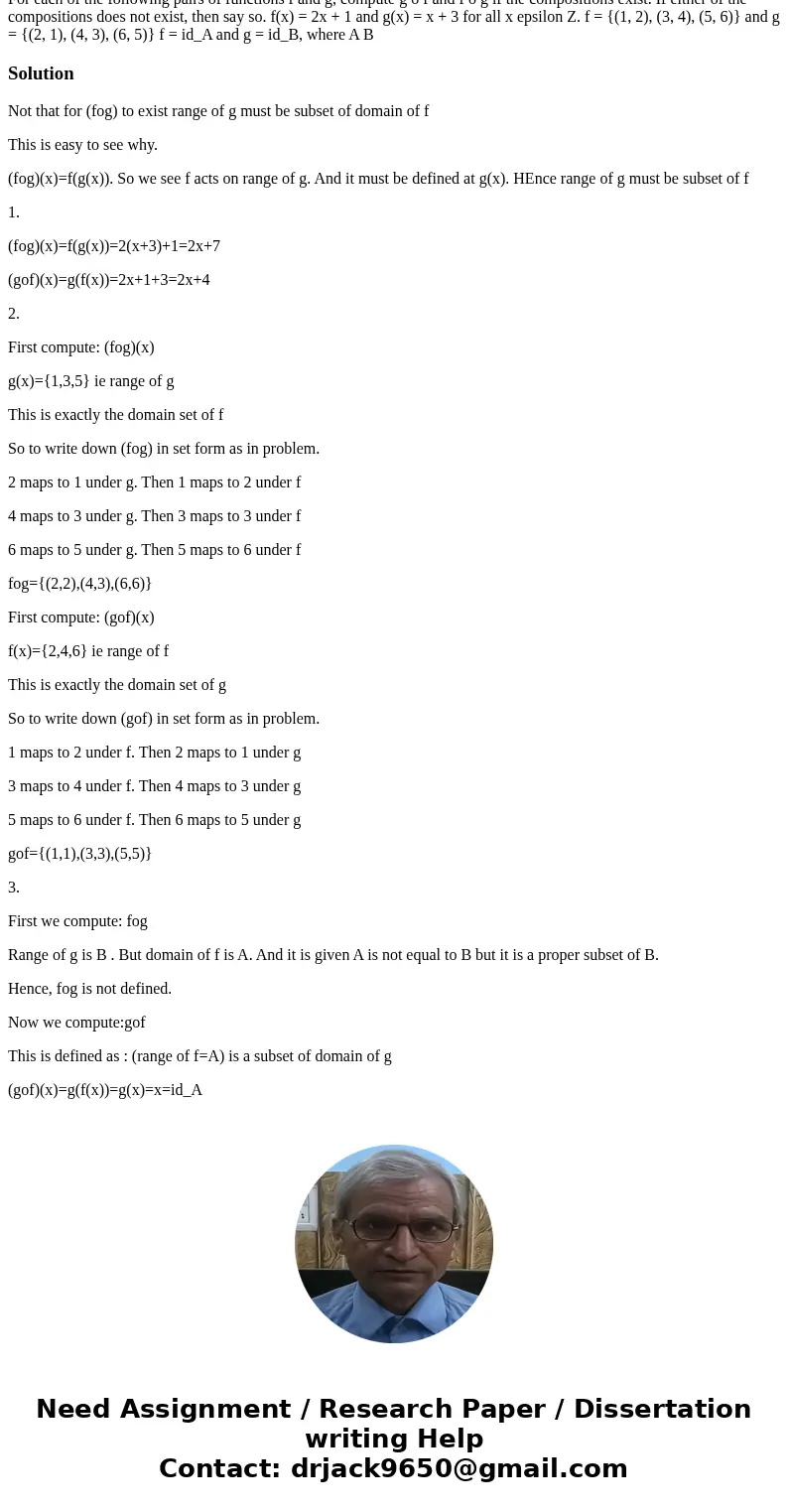Discrete Math For each of the following pairs of functions f
Discrete Math:
For each of the following pairs of functions f and g, compute g o f and f o g if the compositions exist. If either of the compositions does not exist, then say so. f(x) = 2x + 1 and g(x) = x + 3 for all x epsilon Z. f = {(1, 2), (3, 4), (5, 6)} and g = {(2, 1), (4, 3), (6, 5)} f = id_A and g = id_B, where A BSolution
Not that for (fog) to exist range of g must be subset of domain of f
This is easy to see why.
(fog)(x)=f(g(x)). So we see f acts on range of g. And it must be defined at g(x). HEnce range of g must be subset of f
1.
(fog)(x)=f(g(x))=2(x+3)+1=2x+7
(gof)(x)=g(f(x))=2x+1+3=2x+4
2.
First compute: (fog)(x)
g(x)={1,3,5} ie range of g
This is exactly the domain set of f
So to write down (fog) in set form as in problem.
2 maps to 1 under g. Then 1 maps to 2 under f
4 maps to 3 under g. Then 3 maps to 3 under f
6 maps to 5 under g. Then 5 maps to 6 under f
fog={(2,2),(4,3),(6,6)}
First compute: (gof)(x)
f(x)={2,4,6} ie range of f
This is exactly the domain set of g
So to write down (gof) in set form as in problem.
1 maps to 2 under f. Then 2 maps to 1 under g
3 maps to 4 under f. Then 4 maps to 3 under g
5 maps to 6 under f. Then 6 maps to 5 under g
gof={(1,1),(3,3),(5,5)}
3.
First we compute: fog
Range of g is B . But domain of f is A. And it is given A is not equal to B but it is a proper subset of B.
Hence, fog is not defined.
Now we compute:gof
This is defined as : (range of f=A) is a subset of domain of g
(gof)(x)=g(f(x))=g(x)=x=id_A


 Homework Sourse
Homework Sourse